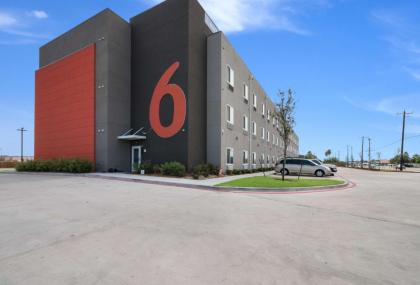Best Hotels Near Hans & Pat Suter Wildlife Refuge
(1.1 km from Hans & Pat Suter Wildlife Refuge)
Coastal Escape with Yard - Walk 1 Mile to Texas A&M! in Corpus Christi provides accommodations with complimentary wireless Internet access.Mustang Island State Park is 16 miles away, and the American Bank Center Convention Center is 7.5 miles away.
7150 S Padre Island Dr (1.7 km from Hans & Pat Suter Wildlife Refuge)
Wingate by Wyndham Corpus Christi offers air-conditioned accommodations in Corpus Christi, 16 miles from Mustang Island State Park. This three-star hotel has an ATM. There is an indoor pool, a fitness centre, and a 24-hour front desk at the hotel.
6717 South Padre Island Drive (1.8 km from Hans & Pat Suter Wildlife Refuge)
This Corpus Christi hotel is located in the Medical District next to the Bay Area Hospital. The hotel offers an outdoor swimming pool free WiFi and an on-site restaurant.
6805 South Padre Island Drive (1.8 km from Hans & Pat Suter Wildlife Refuge)
This Corpus Christi hotel is within 4 miles for Texas A and M University and Oso Municipal Golf Course. It features a spacious rooms with free Wi-Fi.
6773 South Padre Island Drive (1.9 km from Hans & Pat Suter Wildlife Refuge)
Hyatt Place Corpus Christi is located two miles from La Palmera Mall and features an indoor pool and a restaurant. There is complimentary Wi-Fi. Each room features a flat-screen television.s a refrigerator.
6701 South Padre Island Drive (2.0 km from Hans & Pat Suter Wildlife Refuge)
This Corpus Christi hotel offers complimentary WiFi and a complimentary breakfast. A 5-minute drive will take you to Texas A&M University-Corpus Christi.
(2.1 km from Hans & Pat Suter Wildlife Refuge)
Incorporating Corpus Christi Spacious Ranch-Style Getaway on Corpus Christi Bay features a patio and complimentary WiFi.
5274 South Padre Island Dr. (3.8 km from Hans & Pat Suter Wildlife Refuge)
Within 12 miles of Mustang Island State Park and 6.
Top 10 Trending Hotels Near Hans & Pat Suter Wildlife Refuge See all
Budget Hotels Near Hans & Pat Suter Wildlife Refuge See all
Hotels With Great Access To Hans & Pat Suter Wildlife Refuge! See all
Hans & Pat Suter Wildlife Refuge, Corpus Christi, TX
Hans & Pat Suter Wildlife Refuge in Corpus Christi is a protected area of over 550 acres of coastal prairie and wetlands that provide a safe haven for local wildlife. Located in the Gulf Coast region of Texas, the refuge was established in 1966 and has become an important part of the local ecology. It is home to a variety of species including birds, reptiles, amphibians, and mammals such as white-tailed deer, coyotes, and armadillos. The refuge is also an important nesting ground for several species of waterfowl, including pelicans, herons, and ibises.
The refuge contains two ponds, both managed by the US Fish & Wildlife Service (USFWS), that provide habitat for waders such as coots and dowitchers as well as fish species like garfish and channel catfish. In addition to providing habitat for local wildlife, these ponds are also stocked regularly with bass for recreational fishing. Visitors can explore the refuge on their own or join guided tours which are available throughout the year and tailored to fit any visitor's needs.
The Hans & Pat Suter Wildlife Refuge serves as an educational resource to increase understanding of nature conservation. The refuge provides visitors with information about native plants and animals found within its boundaries through educational programs such as hands-on activities in nature classrooms and exhibits at the refuge's education center. The center also houses a library featuring books related to conservation efforts around the world.
In addition to raising awareness about conservation efforts in this particular environment, Hans & Pat Suter Wildlife Refuge strives to help other groups involved in similar projects around Texas by providing funding from fees associated with recreational use permits issued by USFWS at Corpus Christi refuges. This helps support organizations working on ecosystems protection and restoration across the state.
Hans & Pat Suter Wildlife Refuge is one of many examples demonstrating how nature reserves help preserve biodiversity not just locally but nationally as well – it serves a vital role in protecting native species that would otherwise be unable to survive due to land development or human-induced environmental changes such as global warming or pollution from industrial activities nearby. As this reserve continues its mission to protect wildlife while increasing public awareness about conservation efforts locally and across Texas, we can look forward to seeing more evidence of its success in preserving this vital ecosystem in years ahead!











































